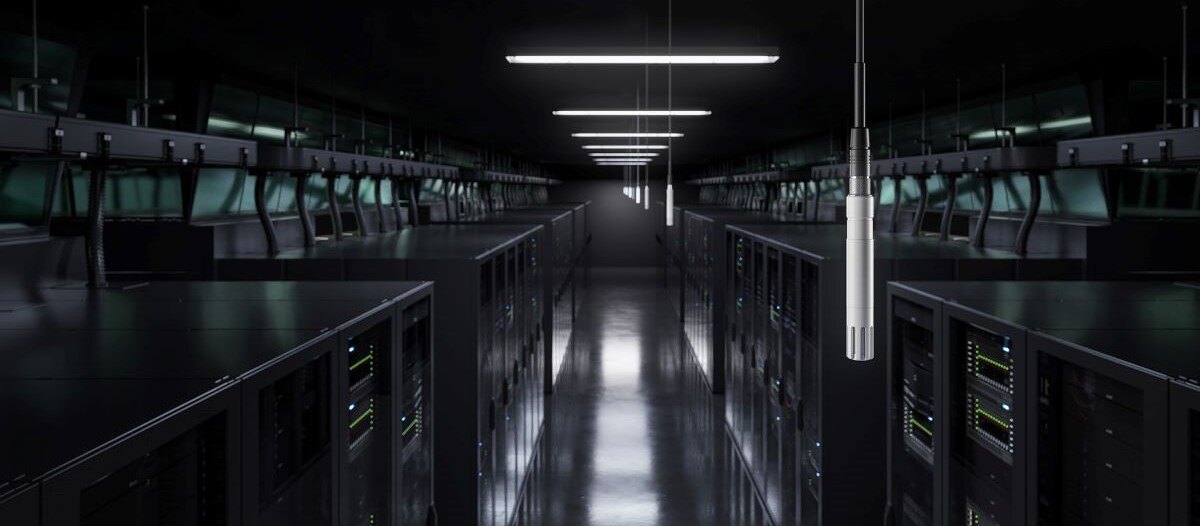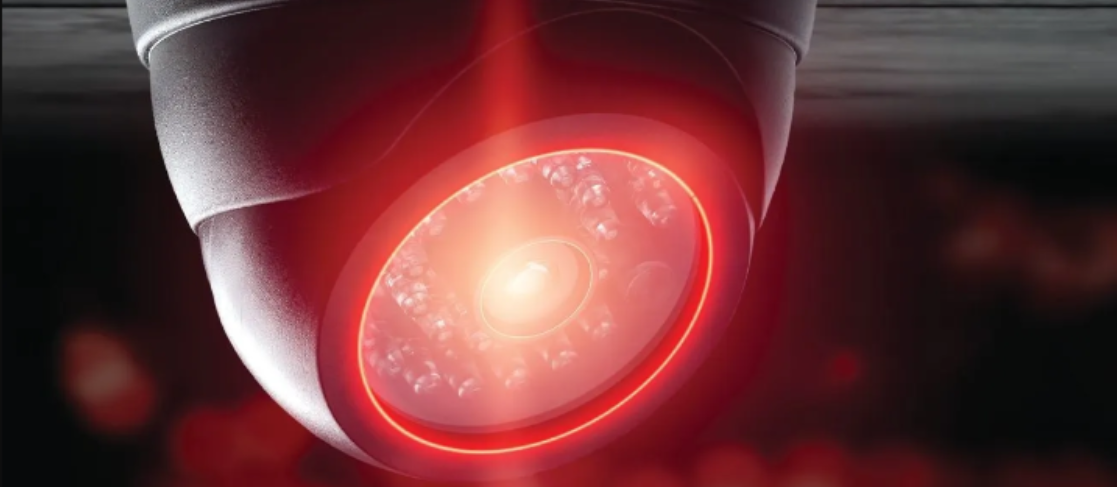Precision HVAC Monitoring
Optimizing data center cost savings

Without data centers, modern lives would not be possible.
The backbone of the internet and digital services, the world’s 8,000-plus data centers house servers, storage systems and network infrastructure, running critical systems and applications that support business operations and propel the digital economy. Given their massive computing power and immense data storage capabilities, data centers enable innovation across industries and the growth of humanity's exploding information set in this increasingly connected, data-driven world.
However, the world’s voracious appetite for data and the services that intelligence enables means data centers consume a lot of energy — about 1 to 1.5 percent of all electricity used globally. Safeguarding the performance and longevity of the equipment in data centers, cooling and HVAC systems accounts for a whopping 40 percent of data center energy usage.
With global government and industry efforts to curb energy demand and emissions growth progressing, decision makers demand accurate HVAC and humidity measurements to mitigate the environmental impact, optimize operational costs and ensure that data centers power our digital age sustainably.
The data center energy dilemma
As computer-intensive applications like artificial intelligence, machine learning and automation persistently drive data center market growth, data center operators face mounting pressure to improve the monitoring, measurement and management of their facilities' environmental impact.
Balancing the rising energy demand of data centers with the needs for improved sustainability, lower costs and stable power supplies creates a conundrum — and the environmental cost of data centers extends beyond the sheer volume of electricity and water they consume. Data centers strain local power grids and supplies as centers seek to squeeze more capacity out of every square meter of floor space. Also, most data center electricity comes from fossil fuels, translating into higher greenhouse gas emissions and greater public scrutiny. Due to the considerable amount of heat generated, data centers require water for cooling, and the amount of water used varies based on the technologies used, the location and the size of the data center.
The more data that centers process, the more the revenue per server climbs — and, along with it, the financial risks associated with downtime. A 2020 study by the Ponemon Institute found that data centers experienced an average of 2.4 facility shutdowns and 10 isolated downtime events that year, with an average outage duration of 138 minutes.
In a world where maintaining 99.99 percent availability is essential to bottom-line success, facility managers must identify the optimal cooling and air conditioning levels to solve their power and heat management challenges.
Between energy-saving techniques like economization, liquid cooling and waste heat reuse, improved guidelines, modular designs, sustainable building practices and — most importantly — enhanced monitoring capabilities, the energy efficiency and environmental friendliness of data centers is dramatically improving. But reducing energy consumption, costs and carbon emissions while meeting customers’ ever-growing demands can be complicated without effective cooling and HVAC system monitoring.
Striking the right balance between these variables is crucial to ensure optimal performance and longevity of data center equipment. According to ASHRAE guidelines, the recommended temperature range for data centers is between 18 C (64 F) and 27 C (81 F), with a relative humidity of 20 percent to 80 percent at -12 C (10 F) dew point.
Understanding the sheer magnitude of the data center energy expenditure underscores the need to cool more data center infrastructure with less power to reduce costs and CO2 emissions. Monitoring and controlling temperature and humidity with precision yields substantial cost savings while simultaneously reducing the carbon footprint of data centers.
Why HVAC & humidity measurement accuracy matters
Operators must balance under- and overcooling in data centers and the associated risks. Overcooling leads to increased costs, while undercooling creates downtime risk. Falsely high-temperature readings can lead to overcooling, boosting energy consumption and emissions. Incorrectly low-temperature readings can lead to incorrect cooling, raising the risk of IT downtime.
Unfortunately, data centers are subject to fluctuating temperature, humidity and airflow, electrical interference and the ever-present risk of equipment failure, all of which can impact the reliability of measurements. From localized hotspots to signal distortion to vibrations and physical stress, measurement challenges in data center infrastructure are multifaceted and affect the maximized uptime requirement.
Fortunately, accurate and stable instrumentation allows the data center cooling system to be efficiently controlled, maintaining temperature and relative humidity at the correct levels. But what are the characteristics of high measurement accuracy?
Long-term accuracy is a combination of the following five characteristics:
-
Nominal accuracy: The instrument’s ability to provide readings close to the actual value of the measured parameter is critical in data centers, where even minor discrepancies can have devastating effects.
-
Stability: Maintaining accuracy and preventing drifting over time and under varying conditions helps measurement instruments enable consistent and reliable data center operations.
-
Calibration interval: Regular calibration ensures that measurement instruments remain accurate. The longer the calibration interval, the more you can reduce maintenance costs and experience fewer interruptions.
-
Calibration method: Calibration methods and standards help determine the accuracy of measurements. Traceable calibration methods facilitate data reliability, whether a simple field check and calibration or an off-site laboratory calibration.
-
Durability: Considering the demanding data center environment, measurement instruments must be robust and durable to withstand temperature variations, humidity and physical stresses. Repairing and maintaining devices in data centers is time-consuming, and confidentiality regulations restrict third-party access to the premises.
Recognizing how to achieve high measurement accuracy and maintain it in the long term, the ensuing section will delve into the tangible benefits of these precise measurements.
How reliable HVAC & humidity measurement accuracy affects data center costs
Accurate HVAC measurement in data centers is critical for optimizing energy efficiency and preventing outages, both of which have an outsized impact on operational costs. The precision and consistency of these measurements play a pivotal role in several ways:
-
Optimized energy use: Accurate temperature, humidity and differential pressure measurement enables precise control of HVAC systems, allowing data centers to operate at higher temperatures without risking equipment overheating. Lower energy consumption translates directly into lower energy bills.
-
Accurate control: High measurement accuracy means that data center managers can fine-tune environmental conditions to match the specific needs of the equipment regardless of environmental conditions. Maintaining temperature and humidity within recommended ranges prevents overheating, condensation and equipment failures.
-
Minimized maintenance costs: Reliable measurements empower data center managers to identify and address issues before they escalate into costly failures.
-
Capacity planning and resource allocation: Accurate data for environmental conditions, energy usage and equipment performance aids in optimizing the use of space, power and cooling infrastructure.
-
Sustainability initiatives: Accurate HVAC and humidity measurements enable data centers to align with sustainability goals, reducing carbon emissions, supporting environmental responsibility, and potentially qualifying for energy efficiency incentives or certifications.
-
Enhanced reputation: Data centers that demonstrate precise environmental control and energy efficiency are more attractive to clients and stakeholders, increasing business opportunities and revenue.
Consider the case of a leading climate system provider and trusted partner of several data centers worldwide assessing measurements and simulations for three European data centers.
In case one, actual measured data forms the baseline. The designed temperatures were changed by 1 C in case one using data simulation and modeling to determine how cooling temperature variations can impact energy consumption. In case two, data simulation and modeling showed a rise of up to 2 percent in annual cooling energy consumption due to reduced supply and return temperatures. The simulations in case three clearly show that lowering the delta temperature by just 1 C can increase data center cooling energy consumption by up to 8.5 percent, or 60 kWh per 1 MW IT load per year. This simulation highlights that drift over time or inaccuracy in measurements in worst-case scenarios can lead to a significant increase in energy consumption.
As data centers grapple with the twin pressures of sustainability and cost efficiency, control over HVAC processes is only as precise as the measurements that inform it.
Designing a modular sensor solution for data centers
Data center managers can proactively manage cost savings and environmental stewardship by investing in state-of-the-art measurement instruments that offer high accuracy, stability and durability.
While cooling a small area is usually straightforward, larger data halls have a more significant potential for spatial temperature variability, ramping up monitoring challenges. Consequently, positioning sufficient temperature and humidity sensors around an optimally designed data center helps minimize energy usage and waste.
When controlling the temperature in data centers, the Delta T is a crucial monitored factor. There are four fundamental ways to monitor the differences in the air:
- Before and after it passes the IT equipment.
- Before and after it passes the coolers.
- Between when the air leaves the coolers and enters the IT equipment.
- Between the air leaving the IT equipment and entering the coolers.
Accurately monitoring these four Delta Ts, relative humidity, dew point and enthalpy equips data center managers to better understand the factors contributing to energy inefficiency to make tweaks and fine-tune performance.
Regardless of the type of data center, organizations need different HVAC sensors for other areas. Data halls and server rooms often necessitate temperature, humidity and differential pressure readings in and between hot/cold aisles. Ventilation systems require knowledge of duct temperature, humidity and CO2, and the differential pressure over fans and filters. In cooling systems, immersion temperature, wet bulb temperature and outdoor measurements (temperature, humidity parameters, pressure, CO2 and weather parameters) are vital.
When selecting sensors and transmitters for data centers, decision makers must account for the following:
- modularity of the solution and interchangeability of components.
- reliability requirements of the measurement.
- convenient, flexible installation and commissioning.
- easy calibration and maintenance of sensors.
- expected sensor/transmitter lifetime.
- sophistication of measurements and availability of advanced parameters.
- experience of the instrument provider on critical measurements.
Following best practices in data center design while simultaneously harnessing advanced HVAC measurement solutions can improve the reliability and efficiency of data center operations capable of adapting to evolving IT equipment demands. Advanced HVAC sensors measure temperature, humidity, dew point and other calculated parameters to optimize energy efficiency and reduce operating and maintenance costs.
Accurate data center monitoring unlocks significant cost savings
Data centers — often seen as energy-intensive giants — can lead the tech industry’s sustainable transformation.
When precision and efficiency propel data center operations, the significance of efficient HVAC monitoring and control cannot be overstated. Protecting against overheating, preventing corrosive condensation and ensuring the longevity of mission-critical equipment, HVAC sensor solutions provide data center operators with a tool to improve energy efficiency and avoid the potentially devastating impact of downtime.
Investing in high-precision sensors and monitoring instruments helps achieve optimized energy use, reduce maintenance expenses and prolong the lifespan of equipment, bolstering data centers’ economic viability and environmental responsibility. Precision in measurement and management is the foundation for a more sustainable digital future.

Anu Kätkä is a global product management in industrial measurements at Vaisala. She has extensive experience in building automation and management systems, metering and monitoring solutions. Kätkä holds master’s degrees in both engineering and economics.
References
iea.org/energy-system/buildings/data-centres-and-data-transmission-networks
nature.com/articles/d41586-018-06610-y
bakermckenzie.com/-/media/files/insight/publications/2021/06/the-rise-of-digital-infrastructure--data-centres_06_2021.pdf?la=en
vertiv.com/490372/globalassets/documents/reports/ponemon/vertiv-ponemon-data-center-downtime-survey-report_321974_0.pdf
ashrae.org/file%2520library/technical%2520resources/bookstore/supplemental%2520files/referencecard_2021thermalguidelines.pdf
Read more on Operations & Maintenance , Technology and Risk Management
Explore All FMJ Topics









